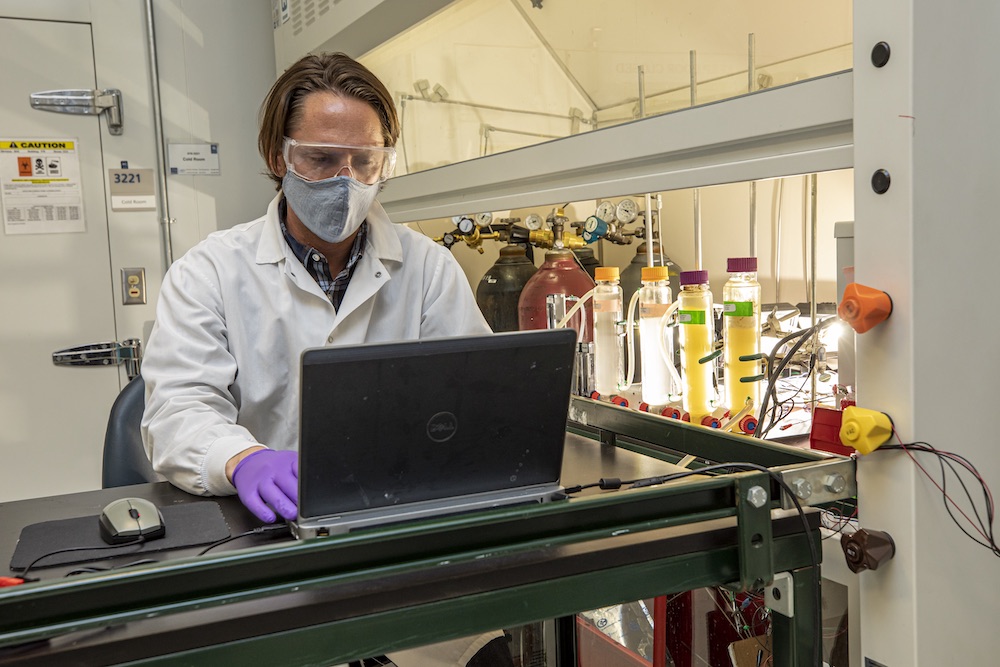The need for negative emissions technologies to address our climate crisis has become increasingly clear. At the rate that our planet is emitting carbon dioxide – adding about 50 gigatons every year – we will have to remove carbon dioxide at the gigaton scale by 2050 in order to achieve “net zero” emissions.
Tag: negative emissions technologies
Using Hundred-Year-Old Chemistry to Capture Carbon Directly From Air
Scientists at Berkeley Lab are working on new approaches to achieve direct air capture of carbon dioxide. Andrew Haddad, a researcher in Berkeley Lab’s Energy Technologies Area with a Ph.D. in inorganic chemistry, talks about how a Nobel Prize-winning chemistry concept from more than a century ago inspired his idea for efficiently capturing CO2.
How Techno-economic Analysis Can Improve Energy Technologies
A Q&A with Berkeley Lab researcher Hanna Breunig on techno-economic analysis, and how she uses it to make negative emissions technologies more competitive

How Microorganisms Can Help Us Get to Net Negative Emissions
A Q&A with Berkeley Lab scientist Eric Sundstrom on a technology to turn electrons to bioproducts

A Sponge to Soak Up Carbon Dioxide in the Air
Increasingly, scientists are recognizing that negative emissions technologies (NETs) to remove and sequester carbon dioxide from the atmosphere will be an essential component in the strategy to mitigate climate change. Lawrence Berkeley National Laboratory (Berkeley Lab), a multidisciplinary Department of Energy research lab, is pursuing a portfolio of negative emissions technologies and related research.